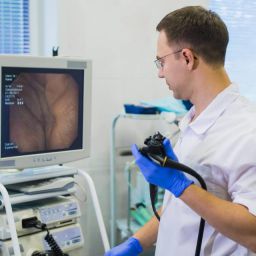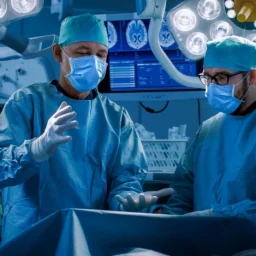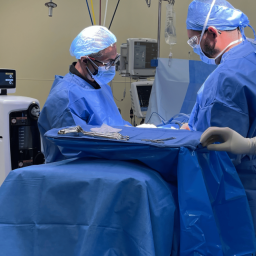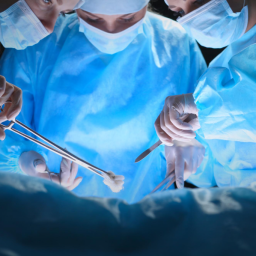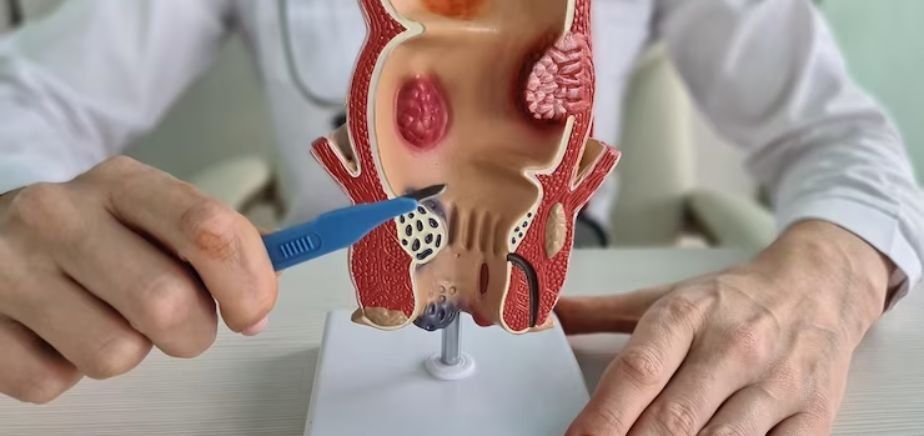
1. The Role of Physical Activity in Digestive Health
Physical activity has numerous benefits for the body, including improved circulation, increased muscle strength, and enhanced cardiovascular health. When it comes to proctological health, exercise plays a vital role in maintaining healthy bowel function, regulating the digestive process, and promoting efficient waste elimination.
1.1 Exercise and Gut Motility
One of the key ways in which physical activity influences proctological health is by promoting normal gut motility. Gut motility refers to the contractions of the muscles in the gastrointestinal tract that help move food and waste through the system. Regular exercise stimulates the muscles of the digestive tract, leading to better coordination and movement of food through the stomach, small intestine, and large intestine.
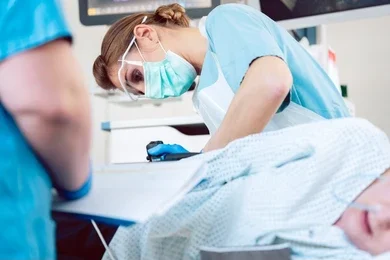
- Enhanced Bowel Movement: Regular exercise has been shown to improve the speed and efficiency of bowel movements. This is particularly beneficial for individuals suffering from constipation, a common condition that is often aggravated by sedentary lifestyles.
- Prevention of Constipation: Physical activity increases the movement of food and waste through the intestines, preventing the stool from becoming too dry and hard. As a result, regular exercise can help prevent constipation and reduce the risk of related conditions, such as hemorrhoids and anal fissures.
1.2 Exercise and the Pelvic Floor
The pelvic floor muscles play an essential role in proctological health, particularly in controlling bowel movements. These muscles support the organs of the lower abdomen, including the bladder, rectum, and reproductive organs. Regular physical activity, particularly exercises that engage the core and pelvic muscles, can help strengthen and maintain the integrity of the pelvic floor.
- Prevention of Pelvic Floor Dysfunction: Weak pelvic floor muscles can lead to a variety of issues, including fecal incontinence, difficulty controlling bowel movements, and pelvic organ prolapse. Exercises like Kegels and other pelvic floor exercises help improve muscle strength, coordination, and control, preventing these issues.
- Postpartum and Post-Surgery Rehabilitation: After childbirth or certain types of surgeries, the pelvic floor muscles may be weakened. Exercise, including pelvic floor exercises, can aid in the recovery process, restore muscle strength, and improve control over bowel functions.
2. The Impact of Physical Activity on Hemorrhoids
Hemorrhoids are one of the most common proctological conditions and are caused by swollen blood vessels in the rectal area. Hemorrhoids can be extremely painful and often result in itching, bleeding, and discomfort during bowel movements. While various factors contribute to the development of hemorrhoids, one of the leading causes is excessive straining during bowel movements, often as a result of constipation.
2.1 Reducing the Risk of Hemorrhoids Through Exercise
Regular physical activity can help reduce the risk of hemorrhoids by promoting regular and easy bowel movements. When a person engages in exercise, the muscles in the abdomen and pelvic floor become more toned, which helps with the elimination of waste and reduces the need for straining during bowel movements.
- Improved Circulation: Exercise improves blood circulation throughout the body, including the anal region. This increased circulation helps prevent the formation of hemorrhoids by reducing the pressure on the veins in the rectal area.
- Reduced Pressure on the Rectum: Sedentary behavior, especially sitting for long periods, can contribute to increased pressure on the rectum and anal veins, which can lead to hemorrhoid formation. Regular physical activity, especially exercises that involve movement and stretching, helps reduce this pressure, lowering the risk of hemorrhoids.
2.2 Exercise for Hemorrhoid Management
For individuals who already suffer from hemorrhoids, exercise can play a crucial role in managing the condition. Low-impact exercises, such as walking or swimming, can help relieve symptoms and promote better blood flow to the affected area.
- Gentle Exercise: Activities like walking, yoga, and swimming are excellent for individuals with hemorrhoids because they do not exacerbate symptoms and promote circulation in the lower body.
- Avoiding Straining: Exercises that involve heavy lifting or intense abdominal pressure should be avoided, as they can increase intra-abdominal pressure and worsen hemorrhoid symptoms.
3. Physical Activity and Anal Fissures
Anal fissures are small tears in the skin around the anus that can cause significant pain, especially during or after bowel movements. Like hemorrhoids, anal fissures are often caused by excessive straining, which can occur as a result of constipation.

3.1 Preventing Anal Fissures Through Exercise
Regular physical activity can help prevent the development of anal fissures by improving bowel regularity and reducing the need for straining during bowel movements. When stool is soft and easy to pass, the risk of tearing the sensitive skin around the anus is minimized.
- Stool Softening: Physical activity helps improve overall digestion, ensuring that food moves efficiently through the intestines. By reducing constipation and promoting softer stools, exercise decreases the likelihood of anal fissures.
3.2 Exercise and Healing of Anal Fissures
For individuals with existing anal fissures, gentle physical activity can aid in the healing process by improving circulation and promoting tissue repair.
- Increased Blood Flow: Regular exercise helps boost circulation to the affected area, supporting the body’s natural healing processes. Adequate blood flow also ensures that the anal region receives the necessary nutrients for tissue repair and recovery.
- Strengthening the Pelvic Floor: Exercises that target the pelvic floor muscles, such as Kegels, can also support the healing process by improving muscle strength and promoting better bowel control.
4. Physical Activity and Proctitis
Proctitis refers to the inflammation of the lining of the rectum, often caused by infection, inflammatory bowel disease (IBD), or radiation therapy. Symptoms of proctitis include pain, bleeding, and discomfort during bowel movements.
4.1 Exercise for Managing Proctitis
Although exercise may not directly treat proctitis, regular physical activity can help manage the symptoms and reduce the inflammation associated with the condition. Low-impact exercises, such as walking, swimming, or gentle yoga, can help improve circulation, reduce stress, and support digestive health.
- Stress Reduction: Physical activity is well known for its ability to reduce stress, which can play a role in exacerbating inflammatory conditions like proctitis. By engaging in regular exercise, individuals can help manage stress levels, potentially reducing the severity of proctitis symptoms.
- Enhanced Immune Function: Regular physical activity strengthens the immune system, which is crucial for managing inflammatory conditions such as proctitis. A strong immune system helps the body fight infection and reduce inflammation.
5. Types of Exercise for Proctological Health
While all forms of physical activity offer benefits, certain types of exercise are particularly beneficial for proctological health.
- Walking: Walking is one of the simplest and most accessible forms of exercise. It helps promote regular bowel movements and improve circulation without putting excessive strain on the body.
- Swimming: Swimming is another low-impact exercise that provides a full-body workout while minimizing stress on the joints and muscles. Swimming can help improve cardiovascular health and promote better digestive function.
- Yoga: Yoga has numerous benefits for proctological health, including improving flexibility, reducing stress, and promoting relaxation. Certain yoga poses, such as the “wind-relieving pose” (Pavanmuktasana), can help relieve constipation and promote better bowel function.
- Pelvic Floor Exercises: Strengthening the pelvic floor muscles is essential for maintaining proctological health. Exercises like Kegels help improve muscle tone and prevent issues such as incontinence, pelvic organ prolapse, and straining during bowel movements.
6. Recommendations for Physical Activity in Proctological Health
To maximize the benefits of exercise for proctological health, it is essential to engage in regular physical activity. Here are some general guidelines:
- Aim for 150 minutes of moderate exercise per week. This can be broken down into 30 minutes of moderate exercise five days a week.
- Incorporate a mix of aerobic exercises and strength training. Aerobic exercises, such as walking, swimming, and cycling, improve cardiovascular health and promote regular bowel movements, while strength training helps maintain muscle mass, including the pelvic floor muscles.
- Avoid excessive straining. While exercise is important, avoid activities that require heavy lifting or intense abdominal pressure, as they can exacerbate proctological conditions like hemorrhoids or anal fissures.
- Stay hydrated. Hydration plays a crucial role in digestive health. Drink plenty of water, especially before and after exercise, to maintain proper hydration and support healthy bowel function.
Physical activity plays an essential role in maintaining proctological health by promoting healthy bowel function, reducing the risk of constipation, and preventing or managing conditions such as hemorrhoids, anal fissures, and proctitis. Regular exercise, including walking, swimming, and pelvic floor exercises, can help maintain healthy digestive function, improve circulation, and strengthen the muscles that support the pelvic organs. By incorporating exercise into daily life, individuals can improve their overall health and reduce the risk of developing proctological disorders, while also managing symptoms in those who are already affected.

